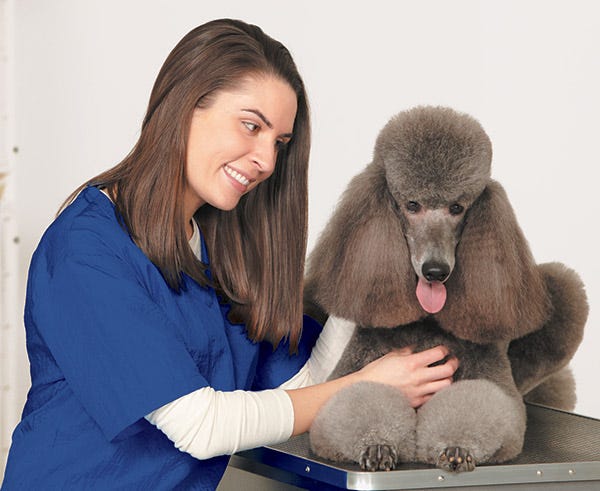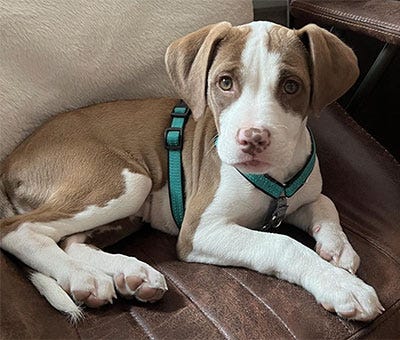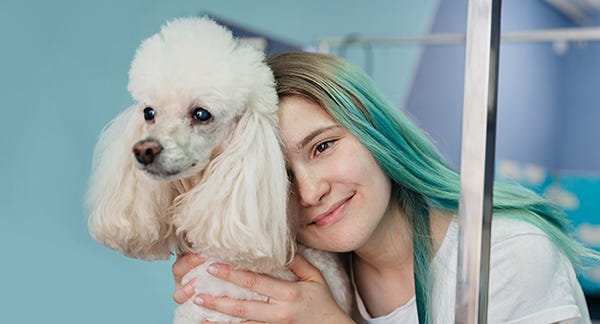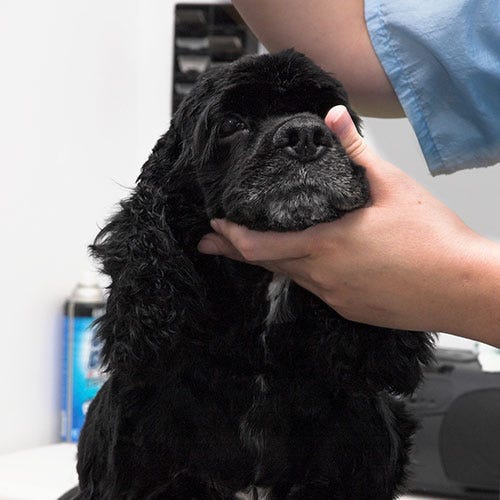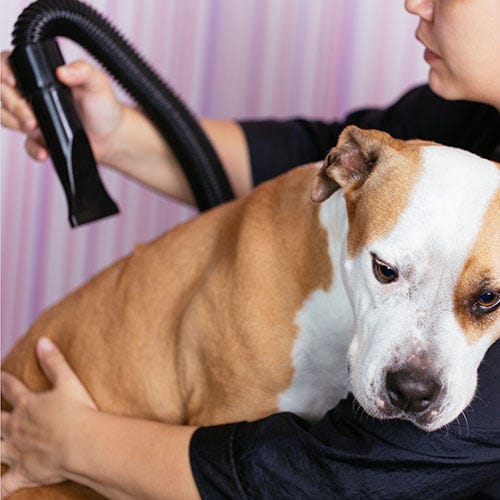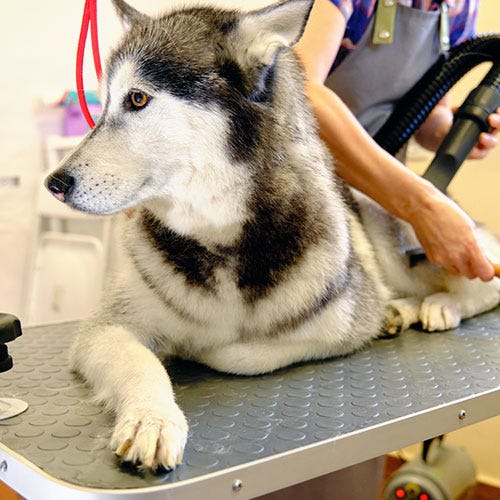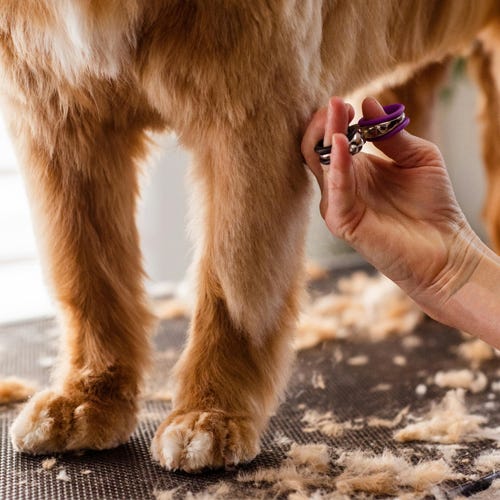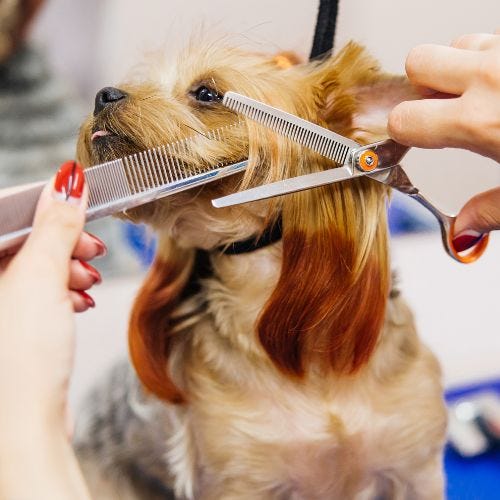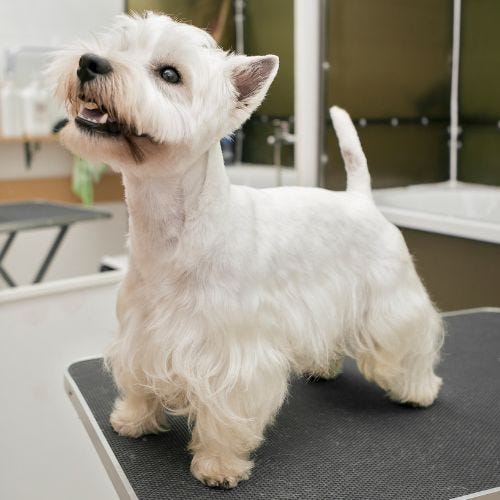Professional pet groomers have their hands on more dogs in a month than ordinary people do in a lifetime. We see and feel dogs when they are wet, our fingers exploring their bodies while the fur is flattened. We get an up-close and personal look at every inch of their skin and coat as we blow them dry. As we brush, comb, and work, we often touch dogs in areas the average owner never pats. We peer into ears, under lips, between toes, and everywhere in between. Because of this, there are stories of groomers discovering and reporting skin irregularities, wounds, growths, cysts, tumors, lumps, warts, and parasites that the owners never knew about.
Beyond seeing and feeling abnormalities, we also note differences in dogs’ behavior if they are regular customers. Here is an example. Over ten years ago, a customer began bringing two West Highland White puppies in to be groomed. Littermates, the boys were on my calendar every six weeks. We moved past the wiggly puppy phase, and the two became solid citizens when it came to being bathed, dried, and groomed.
When they were around nine, one of the dogs suddenly exhibited severe behavioral changes. He tried to bite at various points throughout the grooming process, and in my experience, he appeared to be in some discomfort. I expressed my concerns to his owners and encouraged them to take their pet to their veterinarian. They did as I asked, and the veterinarian declared the dog healthy, but he was prescribed a tranquilizer to make it easier to handle him for grooming. This was not at all my intention. I was able to manage his behavior but was worried about what was causing this sudden and noticeable change in a dog that was previously easy to handle.
Over the next year, this same dog had sudden dramatic hair loss, horrible breath despite having healthy teeth, chronic eye infections, and striking weight loss along with muscle wasting. To my sorrow, the owners were in denial about their dog’s failing health. Even gentle mentions of my concerns were taken as a criticism of their care, which was not my intention. They saw their veterinarian regularly and treated each symptom, but the dog became visibly sicker and less happy each time I saw him.
We received word today that the little guy was diagnosed with untreatable stomach and liver cancer and had been euthanized. I am frustrated and sad because I believe this diagnosis could have come sooner and saved this dog months of gradually failing health. Of course, I am not a veterinarian, but I believe if this dog’s doctor had considered his pronounced change in behavior, he might have performed more tests than he did and discovered the root of his problem sooner.
Psychology Today says, “Intuition is a form of knowledge that appears in consciousness without obvious deliberation. It is not magical but rather a faculty in which hunches are generated by the unconscious mind rapidly sifting through past experience and cumulative knowledge.”
As pet care professionals, we must use our senses and knowledge to note changes in the animals we care for and inform their owners of our observations. It may not help the pet in every instance, but often it will. Learn to trust your intuition. It is seldom wrong.
By Daryl Conner, MPS, MCG
Daryl Conner has been devoted to making dogs and cats more comfortable and beautiful for almost 40 years. You can find her happily working at FairWinds Grooming Studio with her daughter and infant granddaughter, or typing away at her latest grooming-related article. Daryl was awarded both a Cardinal Crystal Award and Barkleigh Honors Award for journalism. She shares her meadow-hugged antique Maine farmhouse with her practically perfect husband and too many animals.


